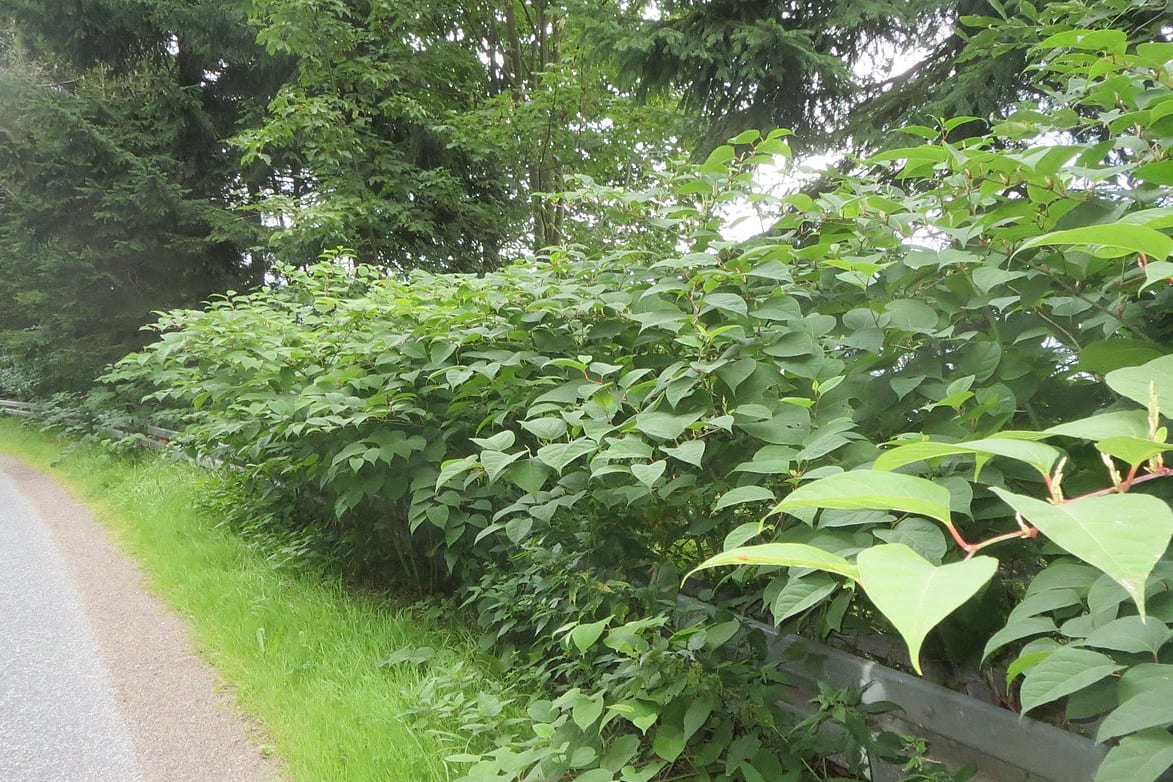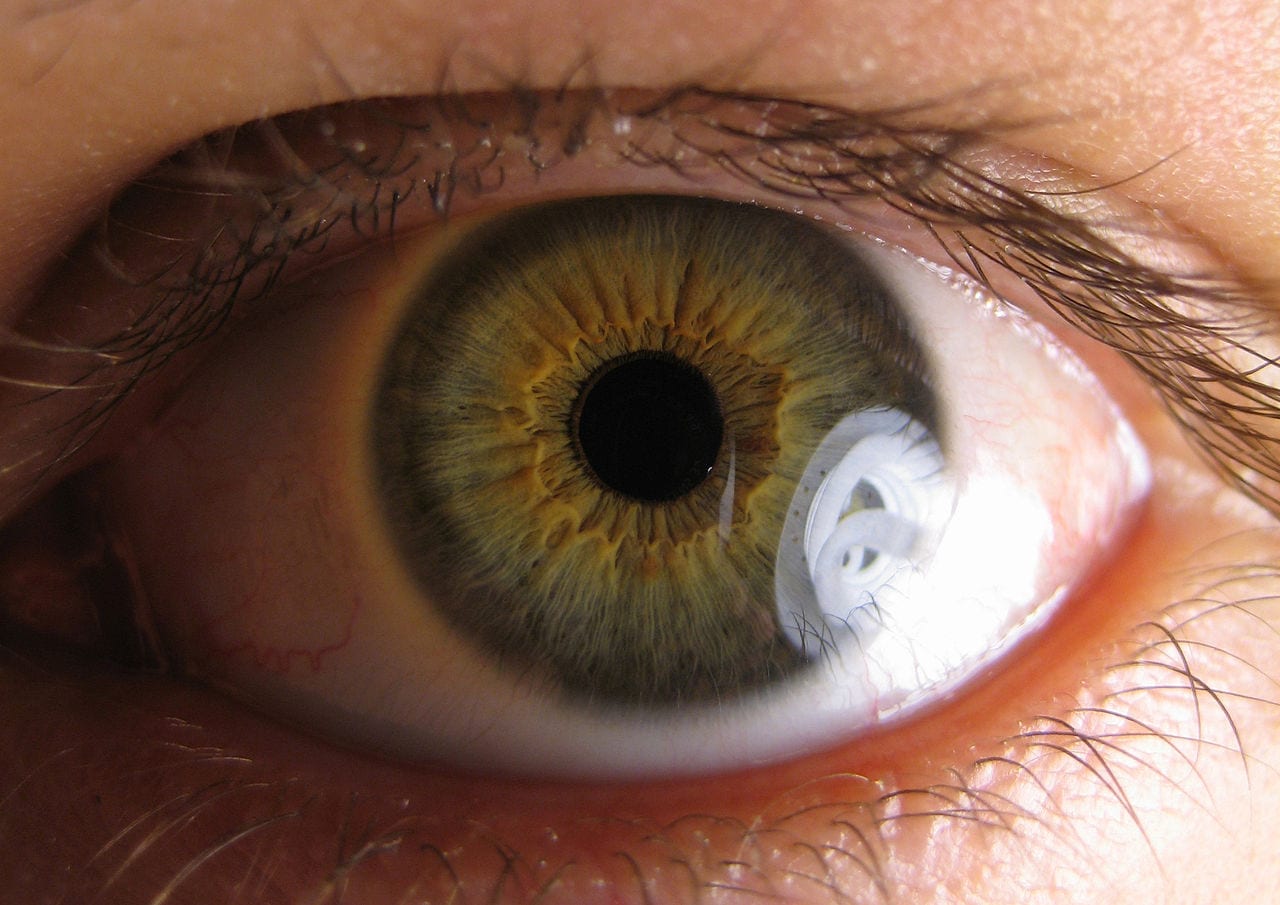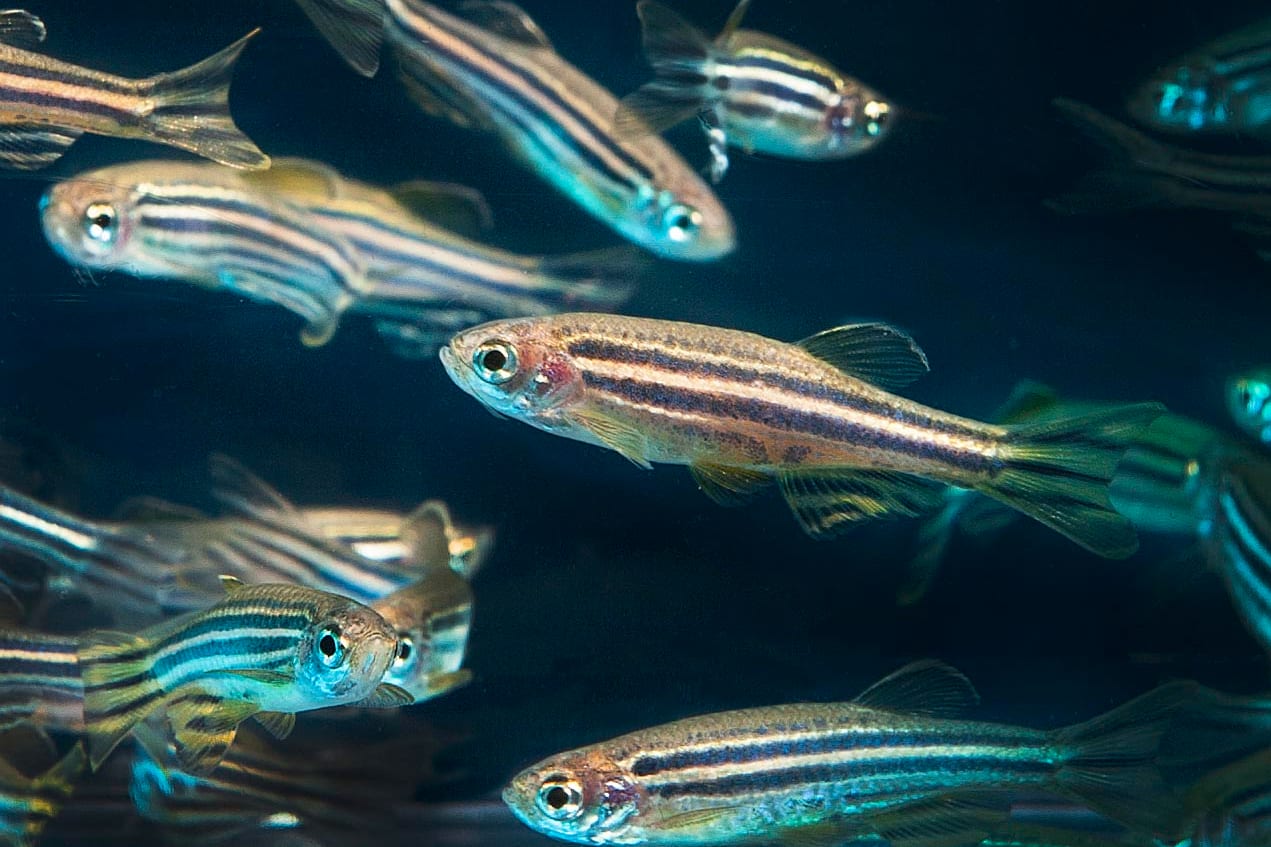When it comes medical cannabis research, few are as close to the frontiers as Jason Dyck.
Years of leadership in his field has afforded him the staff and laboratory space to translate early ideas in experimental animal studies all the way to formal clinical trials.
Dyck is a Tier 1 Canada Research Chair in Molecular Medicine, director of the Cardiovascular Research Centre at the University of Alberta, as well as founder and co-director of provincial clinical heart failure research program Alberta HEART. He’s published over 230 peer-reviewed research papers on a broad range of topics.

Jason Dyck has a PhD in medical sciences from the University of Alberta, where he’s worked for over 20 years. Recently, he was appointed chief science officer at Australis Capital Inc. Submitted photo
Around a quarter of Dyck’s lab space is dedicated to studying cannabis, where he’s advancing study in areas like cognitive impairment and pain management.
He’s also had a hand in corporate weed.
Dyck sat on the board of directors at Aurora Cannabis Inc. (TSX: ACB) (NYSE: ACB) from 2015–2020, and was recently appointed as the chief science officer of Australis Capital Inc. (CSE: AUSA) (OTC: AUSAF) in April.
In the following interview, Dyck discusses the legitimacy of plant medicine, why medical research on cannabis is so complex, how zebrafish are contributing to pain management research and using his academic rigour to develop the safest cannabis products on the market.
The proceeding text has been edited for length and clarity.
Obviously, you have a number of professional responsibilities these days. I’m curious about the interplay between them.
My day job is being a professor of pediatrics at the University of Alberta. And I run my own research lab. I hardly teach at all — they hire me to do research, essentially. Then I direct the Cardiovascular Research Centre, which is a premier centre at U of A.
And then I run a provincial heart failure program, which is Edmonton and Calgary. Now that it’s up and operational it doesn’t require as much hands-on work as it used to. And then I do my own research. And then, of course, I’m now the scientific officer of Australis, so things are things are busy to say the least.
Can you give me a sense of the type of research you’ve been involved with?
It’s all over the map. I’ve been fortunate to receive throughout my career a decent level of funding, which allows me to explore different areas. I started studying cardiovascular disease, expanded on that and now work in a variety of areas. I also study blood pressure control; obesity and diabetes; I’ve done fecal transplants in mice and understanding how the gut microbiota are affecting our overall health; I’ve done breast cancer research. I still have large programs in all of these areas.
What studies in particular are you most well-known for?
I’m a molecular biologist, by training. I studied the molecular mechanisms of how drugs interact, or how different receptors interact with drugs. I’ve trained myself to be a physiologist, and to be what’s called a translational researcher. So I’m able to go from fundamental cell-level tests to all the way to clinical trials.
I’ve been involved in a number of clinical trials on heart failure, looking at different ways to diagnose people, looking at blood-based biomarkers to help understand if they have heart disease, or how far along they are.
My research often starts in rodents. And then if I find something interesting, and of benefit, I work with my clinical colleagues to advance it into early-phase clinical trials. For instance, we’re studying how to protect the heart from chemotherapy, because many chemotherapies are like poisons that kill many cells. However, if you kill a cardiac myocyte, which are the contractile cells in the heart, it’s gone forever.
So given all your great work, how did you end up in the world of corporate cannabis?
For over a decade I’ve been studying a compound called resveratrol, which is found in many plants. If plants are stressed, they produce this compound — not all plants, just some: Japanese knotweed and peanuts, to name a few. Prior work showed that there are a number of processes that can be influenced by resveratrol such as reducing aging, and treatment of obesity and diabetes. But there had not been much work in the cardiovascular system. So we started studying resveratrol to look to see if it has benefits in there.
Jump 10–12 years later, I was very confident that plants as medicine is a real phenomenon. Funny enough, there are a lot of scientists, I would just guess that maybe 90 per cent of us would discard that because we’re raised in an environment where drugs are the pharmacological agents that are generated for one specific treatment, for one specific effect. Plants as medicine was almost seen as a pseudoscience, yet a lot of our drugs originate from plants. The best pain medication we have is from opioids. Nobody questions that is of benefit.

Resveratrol is found in Japanese knotwood, pictured above, and in the skin of grapes. Research suggests it’s a promising agent in promoting heart health and fighting cancer, but more clinical research is required to confirm its benefits. Photo by David Short via Wikimedia Commons
So, I was studying resveratrol. Because of my belief in that research, a friend of mine who was starting a cannabis company called Aurora asked me, “Would you consider being on our science advisory board?” I said, “Only if you’re going to do clinical trials. And we need to know whether cannabis is beneficial or not.” And I was agnostic. All I knew is there wasn’t enough evidence. And this would put me in a great position to answer the question. So that’s how I got into Aurora.
I was put on the board for my expertise and research, and I got an education in corporate cannabis. And then kind of ended that relationship because it was going different directions. So I left Aurora, but at the same time, I started doing some cannabis research in my own university lab. That was before it was legal, but I saw it coming. And I thought, “Our government’s going to legalize a plant that we know very little about. They’re going to legalize it, and they have to fund cannabis research.” So I started switching to doing some cannabis research in my lab without funding. And then sure enough, the government rolled out these programs to fund cannabis research in Canada, once it became legal. And that’s how about 25 per cent of my lab now is working on cannabis. We just basically swapped out one molecule that came from plants with another one, trying to understand the pros and cons of cannabis therapy.
What sort of cannabis research were you doing at Aurora and in your own lab at the time?
Aurora has been doing a lot of trials understanding what the effects are in patients taking cannabis. They’re partnering with universities, trying to understand epilepsy, for example, and getting an understanding of sex differences. I was involved in that research.
And in my time with Aurora, and then my own lab, I became interested in how cannabis could affect pain management. I’m working on a compound and trying to understand which which ingredients in cannabis can be mixed together in the right proportions that allow you to have the most beneficial reduction in pain, but not have cognitive impairment. The goal being that if we could find the right molecules and mix them and match them from the plant extract, someone could still drive a car or go to work yet be on cannabis.
Then on the far end of the spectrum, in Canada all of our healthcare data is under the control of the government. At least in Alberta, and I know in Ontario for sure and I’m pretty sure every province, every interaction you have with our healthcare system enters a database. And as a researcher from the university, with the right ethics you can access that database. I might not know it’s you as an example, but I could pull records from B.C. and be able to say, “This is how many times patient X has come to the ER, how many days off work and worker’s compensation, what ailments they have and what has been prescribed to them.” And I link that with the medical cannabis patients from one of Aurora’s subsidiaries that did patient care and I’m able to follow their outcomes to see: Here’s someone’s medical life before becoming a medical cannabis patient, and here’s their life after becoming a medical cannabis user, and did anything change.

Cannabis use varies by sex and age. Research suggests that edibles are more favoured by women and older demographics, while young men tend to favour smoking. Photo by Darrin Harris Frisby via Drug Policy Alliance
We published a paper on people who are in the medical cannabis stream have more motor vehicle collisions than ones not in medical cannabis. And we studied opioid use. So that’s really understanding what affects patients in the real world — this is called real-world evidence. Those are the main focuses at my own independent lab.
Given promising findings so far, how do you see cannabis and pain management playing out in the coming years?
Right when I started, I realized that the clinical trials that have been done, many scientists either just used THC or CBD. They’re saying, “Here’s one molecule,” which as we know with plants as medicine, those single molecules usually don’t work as well as when you take the whole plant because they have a variety of other things that interact. So, it’s pretty clear that those are very different studies compared to ones that are using let’s say, pure THC versus a cannabis extract. They’re almost not even comparable. The literature has been littered with that, and it causes issues in interpreting the data.
Then you have other ones saying, “Okay, we are going to use cannabis,” but their method of delivery is different. You can’t compare inhaled versus edibles because they’re very different. They’re affecting the body differently. And then another layer is cannabis is not one thing. There are thousands of different cultivars that all have different chemical profiles. So really every individual group is doing clinical trials on another combination of chemicals. The catch phrase or the catch word might be cannabis, but they’re all different drugs.
That’s where you’re looking at some of the work from the existing formulations that are FDA-approved. They have a more reductionist approach as well. They’re standardizing their extracts, like Epidiolex for example. It’s a standardized one mixture, so when you do clinical trials, if there are one hundred groups doing it, they’re at least doing it on the exact same drug. Once we solve that, people start understanding that cannabis is not cannabis.
Probably anecdotally, you probably have friends who go, “Yeah, let’s go buy some weed tonight.” And I say, “Oh, no, I hate weed it makes me sleepy.” And someone else goes, “Really? It makes me laugh. Well, yeah because they weren’t using the same thing.
How did you come to be on the board at Australis, and what work will you be doing there?
As you know, Australis was like the little brother of Aurora — the U.S. component of Aurora, kind of. So I’ve always had an interest and I was an early investor. And then there were some issues with the previous management of Australis and there was a big proxy battle. Me being a major shareholder I was part of the proxy battle. And then individuals who were also part of the proxy battle thought that with my experience at Aurora being on the board of directors, they wanted me to be on the board of directors of this new reboot of Australis because they were starting fresh.
There was another individual as well, who was helping with the proxy battle that knew my expertise, so they knew that I could help in the cannabis space as far as understanding and vetting any science proposals that went forward. With Aurora we had more than 10 science pitches a week. People saying, “Here’s our company, here’s what we can do: we can grow pot faster, we can grow it without mould, can produce THC in algae, or synthesize it.” There are so many big promises and they would always pass them to me to vet them. That’s why they wanted me, so we didn’t spend money frivolously on projects that weren’t going to work. Or if we did find a needle in the haystack or something that was of benefit I would be able to dig in deep and understand it.

Certain cannabinoids have been targeted by companies for the treatment of various conditions. Cannabinol (CBN) is undergoing clinical research as a treatment for glaucoma. Creative commons image
One of my issues with Aurora was that I was on the board. And the board needed a certain number of independent directors, which means I couldn’t work for Aurora. But there’s so much that I wanted to do. I wanted to roll up my sleeves and really get in and do some of the work and direct it. So when I went to Australis, I was like, “I want to be a non-independent board member. I’m still on the board, I can still contribute to the direction of the company corporately, because I’ve learned enough about being on the New York Stock Exchange about governance.” Then they asked me to be their chief science officer, where I could then roll up my sleeves and actually do some of the research.
My ultimate goal as a chief science officer will be to make sure that the safest products are being made. I’m very passionate about that because the industry is somewhat unregulated in the U.S. People are making claims that are not substantiated or there’s no clinical evidence. My biggest fear would be to provide a product that’s going to make someone sicker. I want to prevent that from happening. I want to make the best products that have science supporting them.
Will you be developing novel cannabis-based pharmaceuticals at Australis?
It’s hard to say at the moment. Right now we’re focused on using existing products, and providing scientific evidence that they are safe and beneficial. We have creams, salves and extracts, but we’re going to be making sure they have the right quality control — that they’re safe and work as promised. And then we want to validate that and be able to provide evidence and medical claims. Whether that’s through a regular drug discovery program, I doubt that will be the case. It will probably be through more of the natural product kind of pathway.
While we’re doing that, as we’re building momentum, I think we’ll then start developing our own selective products that are, specifically as I talked about earlier, based on understanding which formulations to mix and match. It’s a stepwise process over the next five years. To be honest, I’m not sure the cannabis industry is ever going to go this pharmaceutical direction, because it gets back to our very early conversations that you have this whole mixture of molecules in there that are interacting differently and I don’t believe many of them can be patented, unless a new one is discovered.
Big pharma is not interested in doing research of something that they can’t own outright and be able to sell. Pfizer is not going to do $100 million trial on MS and cannabis, for example, and then another company go, “Great, thanks for that trial. We spent zero money and now we can still make the same medical claim.”
But there’s some effort, though, to patent specific applications.
I have one that’s pending for an indication as well. Those are harder to enforce because you can just tweak it somewhat. And I don’t believe you can say, “We’re going to use cannabis for the treatment of addiction,” for example, and then suddenly own all that, because it has to be something that’s not obvious to anybody in science. I think you need an independent formulation that is your own IP. And then you can start testing it for certain indications.
Read more: Cannabinol (CBN) the main ingredient in potential treatments for glaucoma and a rare skin disease
Read more: Tetra Bio-Pharma gets 5th orphan drug status for CBD topical
Is there any other research or clinical work you’re excited about right now? You have the floor.
On my own independent level, I’m working on a diagnostic to try to determine, maybe with a roadside test, if someone is intoxicated. We’re looking at biomarkers of cognitive impairment that are not THC- or CBD-related. We know that people living with mental disabilities have certain biomarkers in their blood, certain molecules that indicate they have cognitive dysfunction. And then also other individuals that have cognitive impairment for other reasons. We’re looking to see if there’s a molecular fingerprint in the blood that shows that a person is cognitively impaired.

A number of companies are developing technology to test cannabis impairment at the roadside. Photo by West Midlands Police via Wikimedia Commons
The long-term impact of that would be: You get pulled over and the policeman thinks you’re stoned. He checks your eyes and whatever else they do. Maybe they’ll take blood and send it to a lab and find out your THC levels. But you might not be impaired. You might not even have consumed cannabis recently. Because it’s stored in fat, you might still show that you have THC levels in your blood. So maybe my tests would take blood, and then say, “Yes, not only you have high THC, but look, you have these markers, this fingerprint of being cognitively impaired, so you should not have been driving.” Or that might help people understand that sure, you might have a little THC in your system, but you have no other markers of cognitive impairment.
That’s what I’m working on. There are a lot of steps to get to a roadside test, but it’s got to start somewhere.
Read more: Cannabix vies to be first to capitalize on difficult cannabis impairment market
Read more: This headset measures brainwaves to tell if you’re high or not
Can you go into a bit of detail about one of these brain-based biomarkers for impairment?
Well it’s usually not one. There are multiple ones that have been shown to be related to cognitive impairment. And some will show up in one model of impairment, and not another. So you need a fingerprint — maybe 15–20 different ones. And it’s like: if this one’s up, and this one’s down, and these two are up, that means impairment. They’re just chemicals in our body and metabolites. Even if you have a science background or not, they’re not ones that you would hear: phenylalanine hydroxylase, propionylcarnitine, and lysophosphatidylcholine
By itself, it means nothing. But if, if that goes up, and these three other goes up, and these two go down — that fingerprint, if we can validate it would be a biomarker that can be used potentially worldwide.
That’s very interesting. I think that’s the first time I’ve heard about that approach.
It’s actually quite fascinating because we’re starting at a screening level, which is in zebrafish. We take the larvae of zebrafish and and it’s fascinating because it’s a high-throughput screen, because you have a lot of little larvae that you can test there quickly with a variety of molecules. And then you choose can from a bunch of plant extracts. You can pick the five ones that maybe had the best pain management and little cognitive impairment.
I don’t know if you’ve had zebrafish before, but I don’t think I’d feel comfortable with any of them getting behind the wheel.
[Laughs.]
It’s fascinating. We’re looking at pain management, so you take acetic acid, so vinegar, and you just put a little bit in there, and you follow them to see if they move around a lot. The acetic acid is kind of eating away at its tail a little bit and it causes them to be a little more active, to be in pain. We add one of our CBD or THC component extracts and you see them calm down, even though they have the acetic acid in there. If you add too much of it, let’s say too much THC is in one of the mixtures, they may not move at all. okay, To extrapolate, the zebrafish are likely cognitively impaired to the point where they’re not even moving.
But you want the formulation that still allows for normal behavior, but they don’t respond to the vinegar that we’ve just added into their water. So those are the things that can help us identify very quickly — here’s 100 molecules, 100 different formulations — which ones work. This is currently being done with the National Research Council of Canada. Then we take those to the next phase. The NRC sends us the data, and then in our lab we take those top hits and we give them to rats. And we do the same thing.

The work done at Dyck’s lab takes cannabinoid research all the way from early tests in zebrafish to human clinical trials. Submitted image
We have mazes for rats or novel objects we put in their cages. Usually with a rat if you put a novel object in their cage, they’ll walk over and look at it. Once it’s stoned off its ass, you put anything in the cage and they’re not moving. They just don’t care. Then we could do a little poke test: you poke them with this tiny wire on their foot pad. If it’s painful, they move it away. If they’re stoned, they won’t move their foot away. So clearly, they’re experiencing good pain management. But if they’re not investigating the novel object, then we throw out that mixture and try another one.
We say, “Okay, this formulation is not working because it’s leaving them passed out completely.” Sure, they’re not going to feel anything, but they’re also not going to do any work if they were human right. So then we narrow that pipe down and try other formulations. At the end of this, maybe we only find three that show good pain management without cognitive impairment. And then we take them over to another lab here at U of A and they do it with humans. They do a cognitive impairment test: they put electrodes on people’s heads and send them through this whole scenario of answering questions, with and without taking cannabis, followed by measuring brain activity. We haven’t done that part yet.
We also have a little probe that pushes on their hand ahead of time. And you stop it when you say okay, it’s now becoming painful. Then we do it again after the volunteer has consumed cannabis or taken one of our formulations. Again, trying to find that one secret formula that solves it all. That’s the research I’m working on right now. Which is really exciting because it goes from fish all the way up to a human.
nick@mugglehead.com













